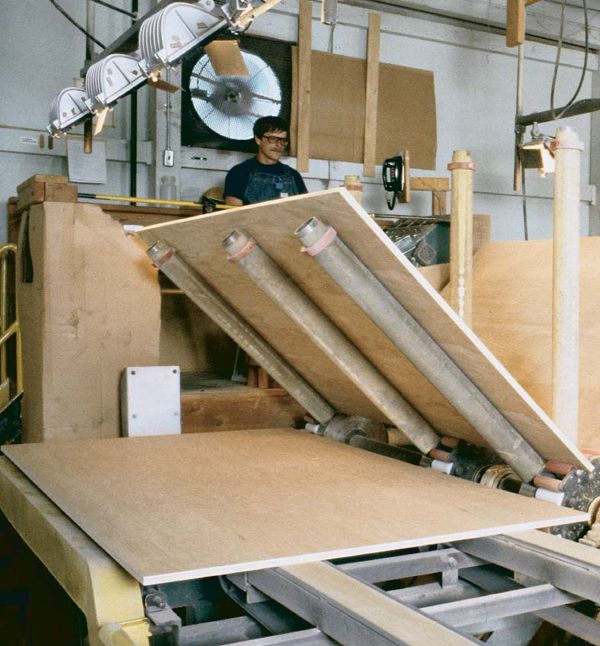
Synopsis: Hardwood plywood revolutionized the furniture and cabinet trades, writes William Duckworth of Fine Woodworking. He talked to a number of custom woodworking shop owners to see how they use it and toured several manufacturing plants to see how it’s made. He explains core construction and how material performance measures up, and he shows how veneer faces are laid five different ways. You’ll learn about pricing, what size to get, how much to buy, and where to get it. Duckworth also explains howplywood has improved over the years, and which types are best for which jobs.
I became a woodworker almost by accident. Living alone, just out of college and far from home, I started to build furniture for myself because I couldn’t afford to buy it. The living room of my three-room tenement apartment, a fifth-floor walkup in New York City, was my shop. The most basic hand tools were all I had to work with. When the downstairs neighbors had heard enough noise, they’d start banging on their ceiling with a broomstick, so even my working hours were limited. Materials? I made everything out of pine—it’s all I could buy at the local lumberyard.
I fell in love with the process so much that I started building furniture for friends at no charge. It took a few years before I realized I might be able to do this for a living. So I quit my job, rented a small space in a nearby basement and paid $350 for a Sears Best 10-in. tablesaw.
One of my first commissions was a wall of bookcases. I’ll never forget my astonishment when a friend of mine suggested I consider making them with birch plywood. My local lumberyard didn’t stock it. I didn’t even know what it was. That soon changed, and I started using birch plywood all the time. It wasn’t long before I graduated to oak, ash, walnut and mahogany panels.
Hardwood plywood has transformed the furniture and cabinet trades. I don’t share the belief that woodworking projects are necessarily inferior if not entirely constructed of solid lumber. Lumber and veneered sheet goods can work well together in a fine finished product. Purists who eschew the use of manufactured veneer panels are blind to the realities of the marketplace. These products are the backbone of the business of modern cabinetmaking. They save time and, in some applications, actually improve the quality of the end result. For those who believe otherwise, I would argue that, given access to the technology, Thomas Chippendale or Duncan Phyfe would have jumped at the chance to use a plain-sliced, book-matched Honduras mahogany panel with a medium-density fiberboard (MDF) core. Whether they were making tabletops, desks or the carcases of small chests of drawers, these two were businessmen as well as artists. Can anyone doubt that the same would be true for the Shakers?
From Fine Woodworking #117
For the full article, download the PDF below:
Fine Woodworking Recommended Products

Dubuque Clamp Works Bar Clamps - 4 pack

Festool DF 500 Q-Set Domino Joiner

Starrett 12-in. combination square






















Log in or create an account to post a comment.
Sign up Log in